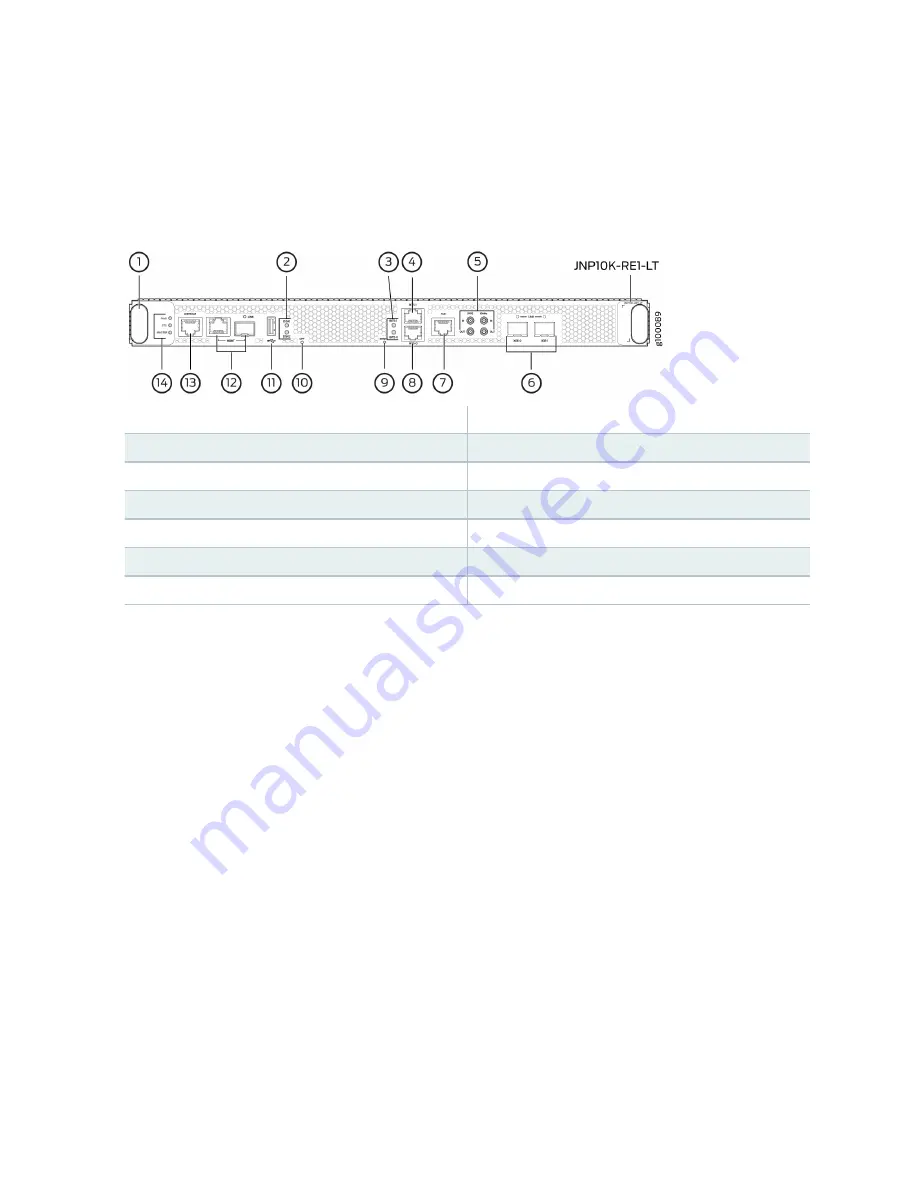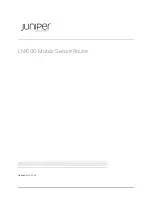
Routing and Control Board Components
Figure 27: JNP10K-RE1, JNP10K-RE1-LT, and JNP10K-RE1-128G Routing and Control Board
Faceplate
1
—
Handles
8
—
BITS0 clock port
2
—
Solid State Disk (SSD) LEDs
9
—
Reset button
3
—
Clock LEDs
10
—
Online/Offline button
4
—
BITS1 clock port
11
—
USB port
5
—
GPS clock ports
12
—
Management (MGMT) ports
6
—
XGE-0 and XGE-1 not used (reserved ports)
13
—
Console (CONSOLE) port
7
—
ToD—Time-of-day (TOD) port
14
—
RCB status LEDs
Each RCB consists of the following internal components:
• CPU—Runs Junos OS to maintain the routing tables and routing protocols.
• EEPROM—Stores the serial number of the Routing Engine.
• DRAM—Provides storage for the routing and forwarding tables and for other Routing Engine
processes.
• One 10-Gigabit Ethernet interface between the Routing Engine and Switch Fabric Board.
• One USB port—Provides a removable media interface through which you can install Junos OS
manually. The Junos OS supports USB versions 3.0, 2.0, and 1.1.
• Management ports—Two ports, one copper (RJ-45 port) and one SFP port, provide access to
management devices. Use only one of the two management ports at a time.
Use an RJ-45 connector for the copper port.
Use a fiber optic connector for the SFP port.
Do not use copper SFP or SFP-T modules in the SFP port because they are not supported.
• RESET button—When pressed, reboots the RCB as detailed below:
58















































